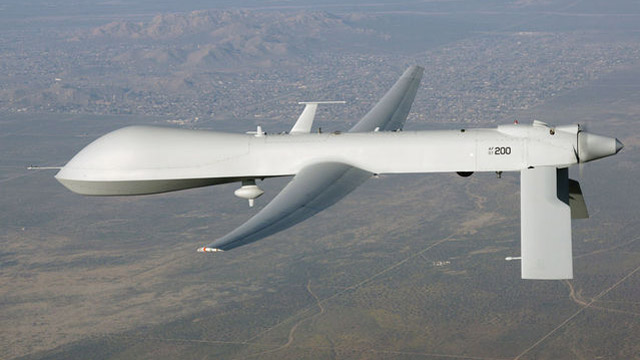In a bid to curb the deadly US drone campaign, Al Qaeda’s leadership has assigned cells of engineers in Pakistan to find ways to shoot down, jam or remotely hijack US drones, according to the Washington Post.
In a bid to curb the deadly US drone campaign, Al Qaeda’s leadership has assigned cells of engineers in Pakistan to find ways to shoot down, jam or remotely hijack US drones, according to the Washington Post.
The terrorist network is hoping to exploit the technological vulnerabilities of a weapons system that has inflicted huge losses against it, the influential US daily reported Wednesday citing top-secret US intelligence documents.
Although there is no evidence that Al Qaeda has forced a drone crash or successfully interfered with flight operations, the Post citing documents said US intelligence officials have closely tracked the group’s persistent efforts to develop a counter-drone strategy since 2010.
The airstrikes have forced Al Qaeda operatives and other militants to take extreme measures to limit their movements in Pakistan, Afghanistan, Yemen, Somalia and other places.
The Post said a top-secret intelligence report, titled “Threats to Unmanned Aerial Vehicles,” provided to it by Edward Snowden, the fugitive former National Security Agency contractor, gives a summary of dozens of intelligence assessments posted by US spy agencies since 2006.
US spy agencies have concluded that Al Qaeda faces “substantial” challenges in devising an effective way to attack drones, according to the top-secret report disclosed by Snowden.
Still, US officials and aviation experts acknowledge that unmanned aircraft have a weak spot: the satellite links and remote controls that enable pilots to fly them from thousands of miles away, the Post said.
In July 2010, the Defence Intelligence Agency (DIA) reported that Al Qaeda was sponsoring simultaneous research projects to develop jammers to interfere with GPS signals and infrared tags that drone operators rely on to pinpoint missile targets, it said.
Other projects in the works included the development of observation balloons and small radio-controlled aircraft, or hobby planes, which insurgents apparently saw as having potential for monitoring the flight patterns of US drones, according to the report.
Al Qaeda cell leaders in the tribal areas of northwestern Pakistan were “determining the practical application of technologies being developed for battlefield applications,” analysts from the DIA wrote, according to the Post.
The analysts added that they believed Al Qaeda “cell leadership is tracking the progress of each project and can redirect components from one project to another.”
-IANS





